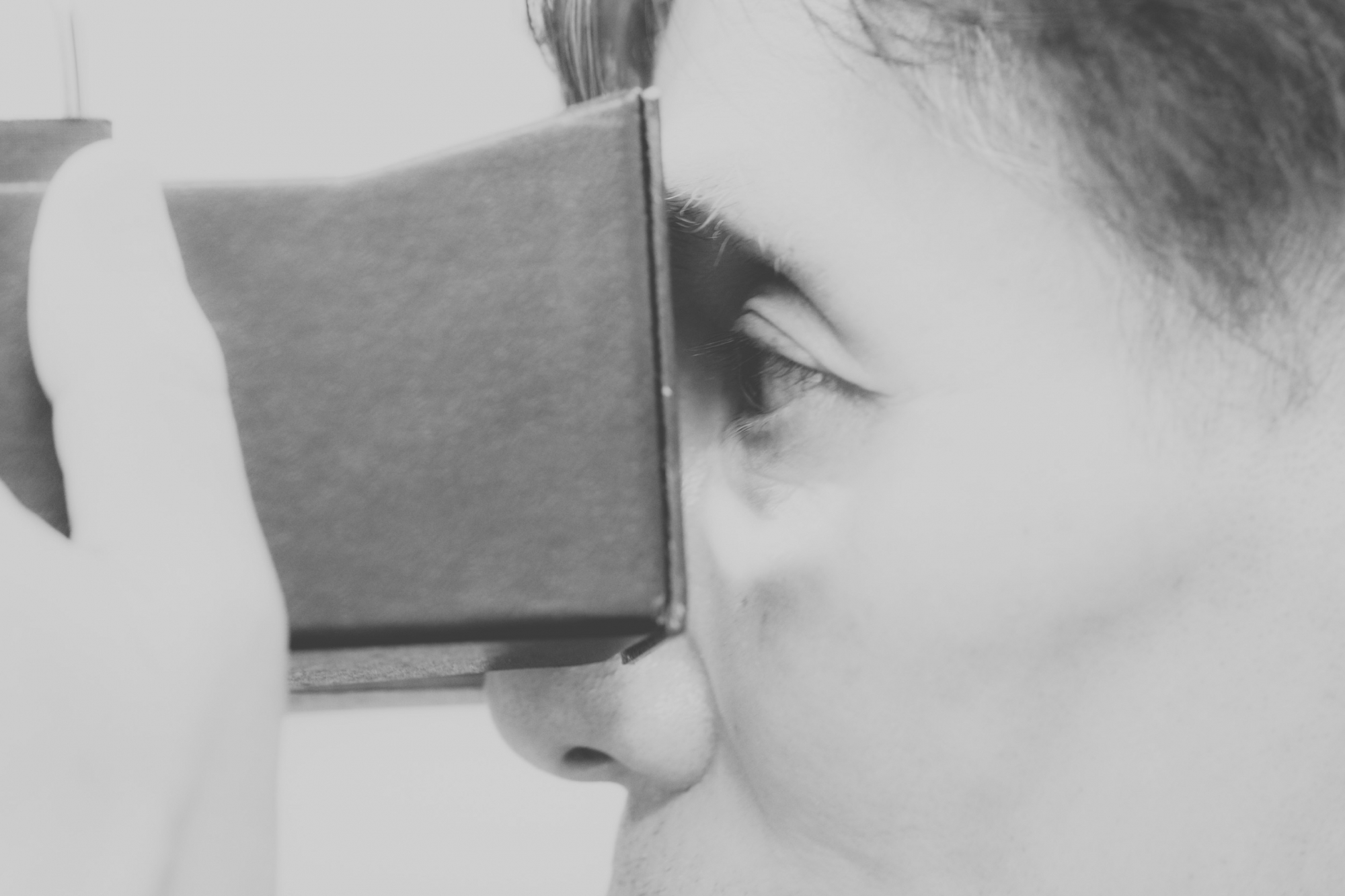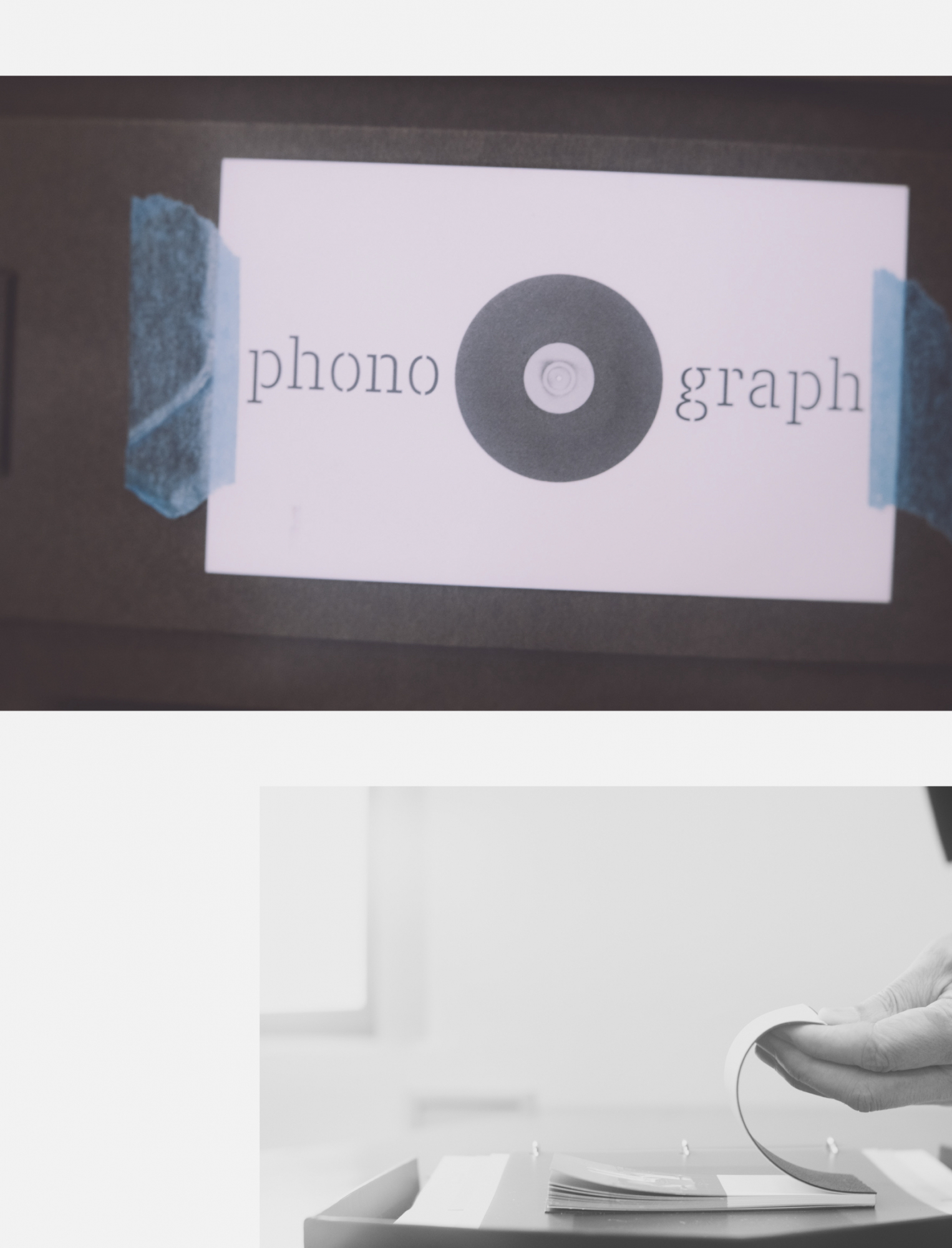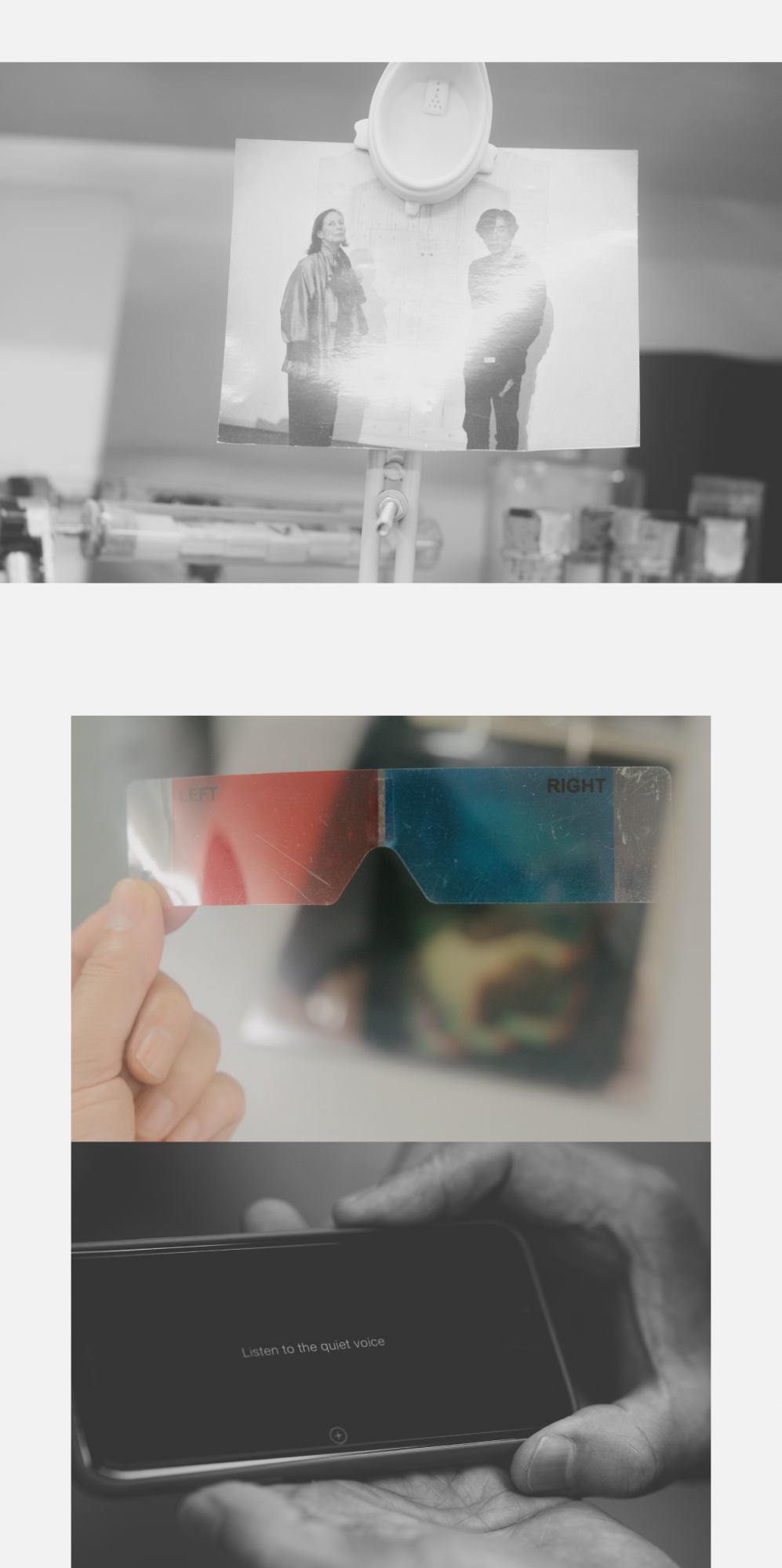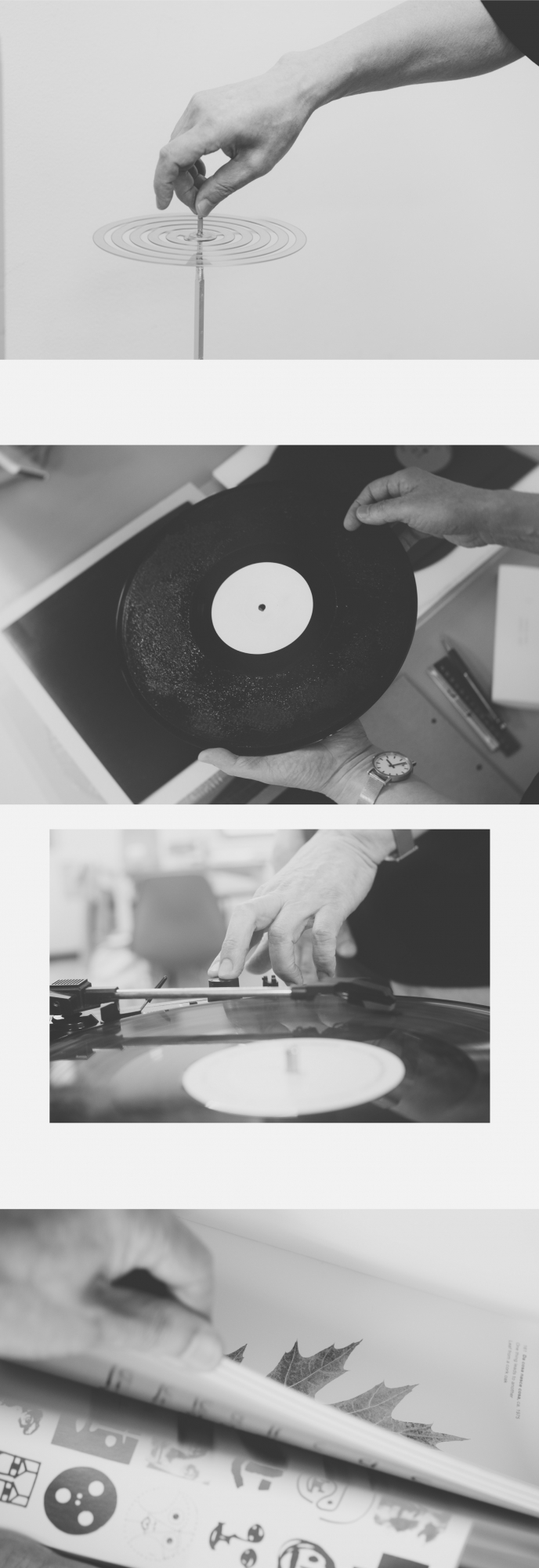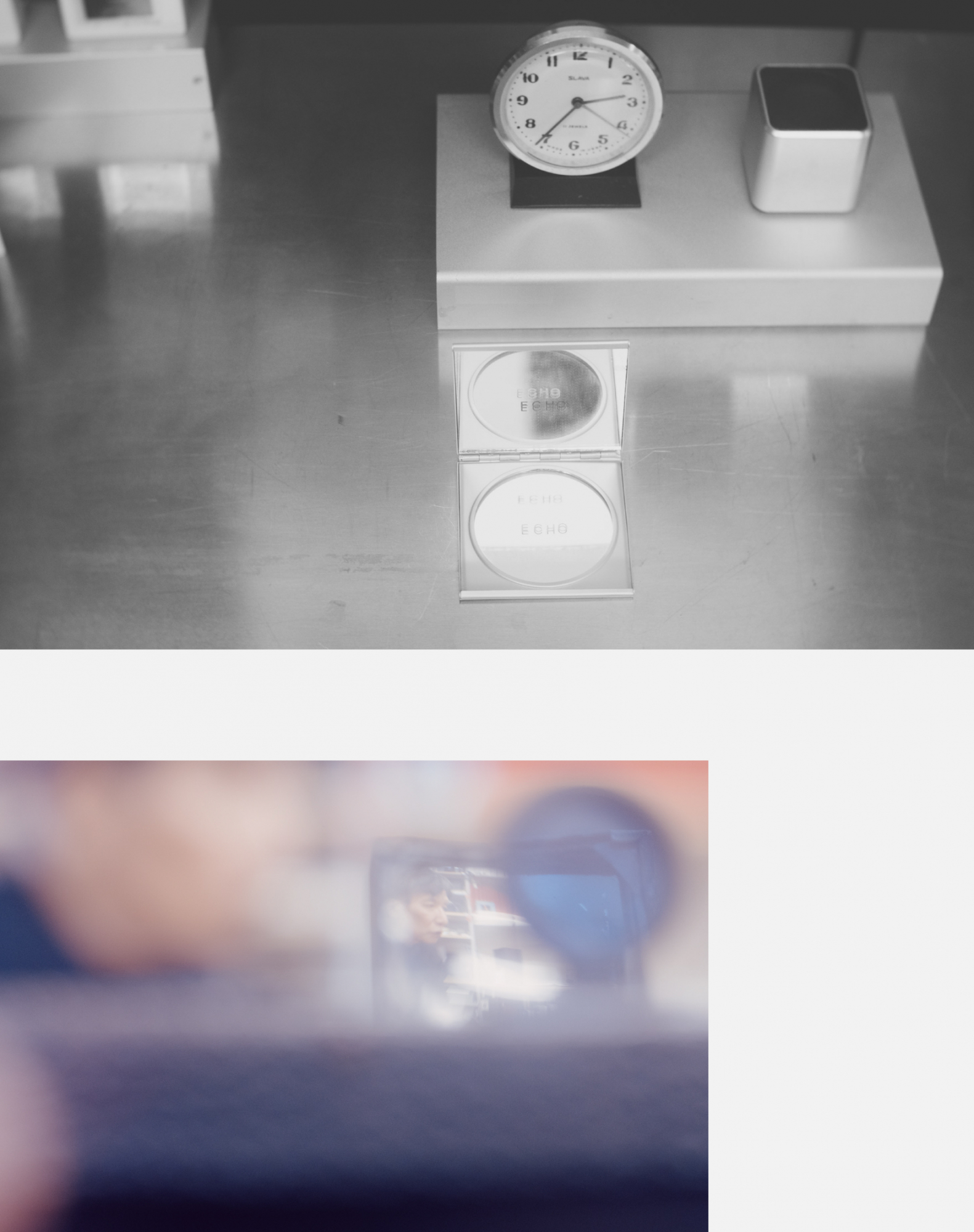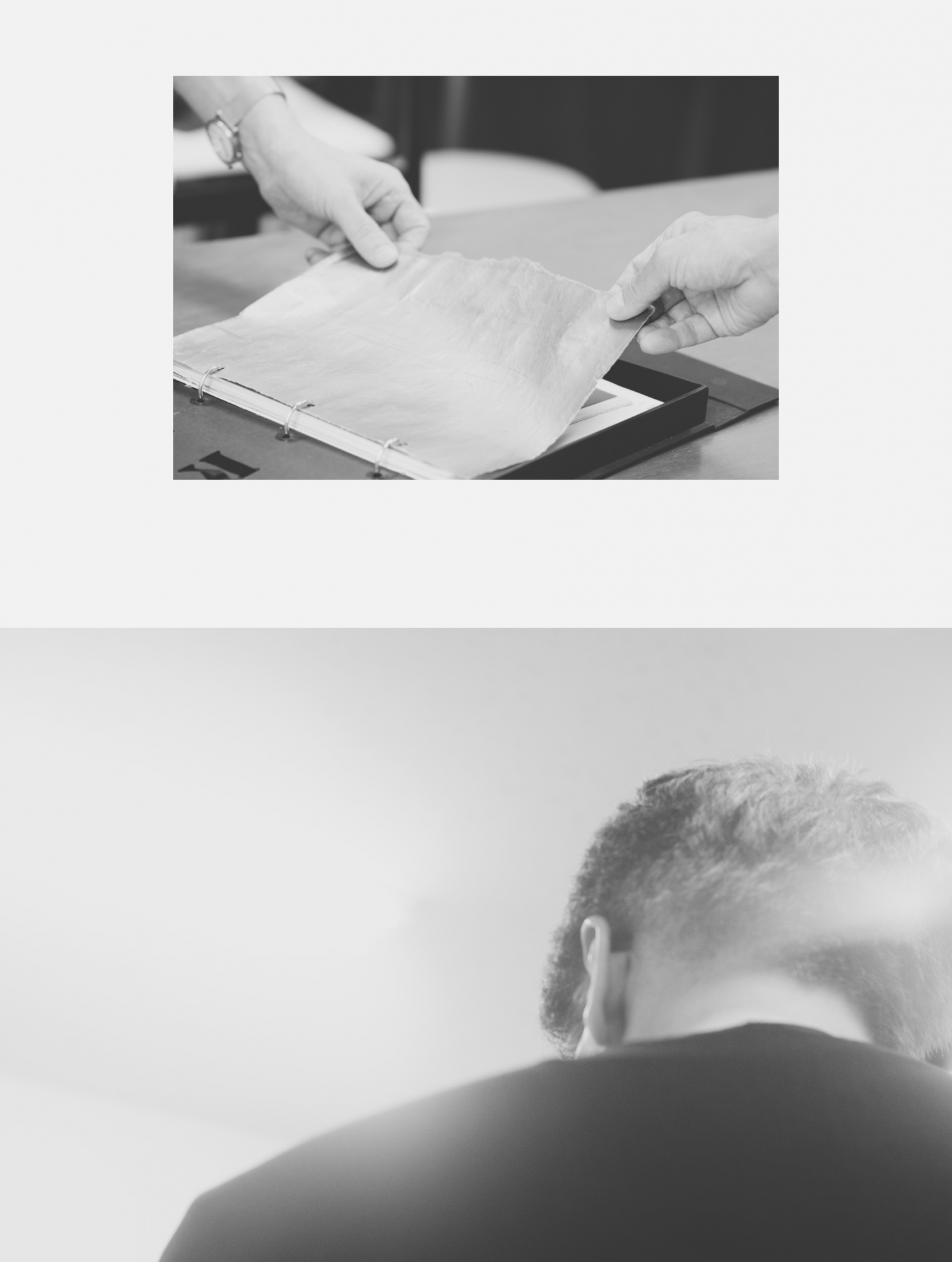I met Fujimoto Yukio for the first time in 2013, in Kyoto, as he was performing with his collaborators of
the phono/graph project. There I discovered and experienced
Turn Over, a 40 x 55 cm, landscape book of blank pages, crafted for the reader to feel, and listen to, the singular texture of each page. I saw
THE BOX OF MEMORY at Kumagusuku in Kyoto, in 2015. I found there a gentle and clear way to be engaged in the world. He made me consider Stéphane Mallarmé, John Cage, Marcel Duchamp, and his installation was singular, his objects clear, soft, colorful, evoking sound, inviting touch.
Anne-Laure Chamboissier and I also had the joy to invite him and his collaborators to present their work in Brussels in 2019.
In between these exhibitions, I can say that his perception deepened my everyday world. I can’t convey these many moments, or the extraordinary diversity of his practice, so I will hope the reader follows this writing outward and inward into the worlds of his work.
Foster Mickley’s exploration of the space, and his remarkable sensitivity, are in dialogue with Fujimoto’s studio, movements, and our shared experience. As Fujimoto was showing an artwork, playing and re-playing a record, flipping through books and notebooks, his attention and curiosity being drawn, Foster looked outward with him. I would watch as he positioned the camera from the same height and distance as Fujimoto’s eyes a moment before. The images echo Fujimoto’s curiosity. The images do not define, but evoke attention, a distance of friendship. They echo the movement of Fujimoto through his studio, and progressions of his imagination. They are a return, an exquisite shift of time and space into thought and form.
Fujimoto’s studio is located in a former storage building, the walls withstood the Kobe earthquake in 1995. We can indeed guess the sea from the windows of the studio. The owner dedicated the building to the artistic community. As Fujimoto shows us, welcoming us at the door, the spaces surrounding his studio are indeed dance and recording studios. Another room was the set of an iconic scene of Japanese filmmaker Kitano Takeshi’s
Outrage (2010) – it remains as such, old posters and press articles pinned on the walls documenting a space filled of props and equipment.
Fujimoto has been often here for the last thirteen years. To enter his studio is to find oneself strangely consoled, at ease. It is the space of an ideal real: everything is noticed, everything is included. When we enter, the studio is softly luminous, brightened by two high windows opened to a clear sky. We have the feeling to see a sanctuary. Several sources, recordings of sounds and music envelop the space. Fujimoto’s voice softly fuses, you can hear he is smiling as he speaks, sometimes softly as if to whisper. We enter with a feeling of exaltation.
Fujimoto shares that he loves to be within sounds, and recalls that younger, during a trip with friends in Otari-mura in the mountains of Nagano (the Japanese Alps), he found himself frightened by that silence. He has, since then, always made his own soundscape in silent spaces, whether it is his studio or exhibition rooms.
Discovering Karlheinz Stockhausen and contemporary music led him to study musicology. But we are reminded that he also listens to Miles Davis and John Coltrane, The Beatles and the Talking Heads, and composed music under the band name Normal Brain.
We notice what was actually framing the large room: walls of shelves, full of carefully arranged devices, artworks, models, films, records, books, memories, mottos – treasures. Above the entrance, Fujimoto has hung a 1:1 scale reproduction of the
Fountain that he made. The studio often invokes and plays with, or is inhabited by, Marcel Duchamp. There is a collection of books, some of which Fujimoto pulls from the shelves, to dive into memories and inspirations. He discovered the
Bottle Rack as a student, and he keeps a discreet photograph, playfully displayed, of him posing with Duchamp’s daughter.
With Duchamp, Fujimoto shares a radical playfulness. With John Cage, he includes chance operation within his work. He is not so interested in defining what art is, and offers instead the imagination that comes along with a playful practice – as well as its freedom. On a shelf, we have the joy to find a deck of Brian Eno and Peter Schmidt’s
Oblique Strategies. Fujimoto has also a digital deck, and reveals that he made a Japanese version.
As he plays records, we notice his touch. Touch appears as essential as listening to Fujimoto. It is a language, a way to understand the world, and share his artistic practice, meant to convey his attention to the world. As we go through and listen to some of his records, their covers worn with time, as the marked covers of his books he read and re-read, we are reminded records are to be touched, listened to over and over again, and can be played and played with. Many of his record works come to mind, among them, the
DELETE series exhibited in
plus/minus at Osaka National Museum of Art in 2007. The same way, he invites the visitors of his exhibitions to touch most works, many designed to be activated.
Fujimoto recalls the exhibition series
Audio Picnic at the Museum, a one-day exhibition held for ten consecutive years in
a former Japanese style residence. His works were to be touched and activated by the visitors, found and enjoyed. There, he showed a large number of his
Philosophical Toys, among them works he made using music boxes, producing delicate sounds. For him, quiet sounds invite. He would not give instructions or indications, to enable the possibility of curiosity, to question, in his way the notion of artwork, to allow the creation of an intimate relation to a work, as a reader to a book.
This exhibition functioned over the years as a laboratory, where Fujimoto could design site-specific installations, and explore the relations between light, sound and space, where the visitors completed the work through their “performance” in the space.
We notice a vast number of notebooks, filled with sketches and writings, small poems, memos, quotes and drawings. He has numerous scrapbooks he made while researching about artists he loved, such as
Murakami Saburo, and other notebooks filled with his favorite quotes by Marcel Duchamp. Fujimoto is also a researcher, of exceptional care. Later we find a small model of Duchamp’s
Rotary Glass Plates. While spinning the plates, Fujimoto explains that he made it from a photograph, that it is important for him to “make” to better understand, and to create from the making, from those sensations.
He is also a writer. But as he creates, Fujimoto says, he does not have intuition, or preexisting concept. It is more interesting not to know, and to explore. The words are afterwards.
Further and higher up on a shelf, stands a beautiful old camera, given by the artist’s father. Fujimoto shares that his father collected audiovisual equipment, cameras, recorders, passed to him for exploration, as new releases became his preference. He says that he enjoyed particularly a tape voice recorder, with which he recorded and manipulated his voice in many ways. But one will recall that he also experimented with photographs, as Duchamp did. He challenged the problem of the form with movement – from Eadweard Muybridge to Man Ray -, with which he experimented within an early video work,
Reading Muybridge, a bridge to moving image. He followed the work of Jonas Mekas and Stan Brakhage, and the cinema of Stanley Kubrick, Ozu Yasujiro and Terayama Shuji. He experimented with stereo-photography, as well as with 3D cinema.
Seeing is indeed as much and as related as listening. One of his most beautiful words, he shared with Foster Mickley – “Here and There,” evokes the act of seeing and listening, as one can always see “there” while listening to “here”. Talking about these in his lecture at Osaka National Museum of Art in 2007, Fujimoto reconstitutes some of the most engaged thoughts publicly expressed by himself, questioning our sensitivity towards others, our budding sensitivities.
As he turns the pages of the books, he says that libraries should be open books, to touch and feel the pages. We remember reading about the
Broom installation in a reading room in Kitakyushu Municipal Museum of Art, filled with leaves long past their season, inviting the staff and guests to “listen to the space”. We also remember
Ears with Chair, an installation-device designed to listen, with attention and care, to the landscape, presented at the 52nd Venice Biennale.
We, then, remember his writing for
Reading to Another Dimension (2001- ), where he expands what a book is, inviting to explore the possibilities of reading with the five senses. It seems to be the theme of the exhibition he is holding in Osaka now,
Read. Going further, he writes that museums should be like libraries, that artworks should be read, not seen.
Fujimoto Yukio
Born in Nagoya in 1950, Fujimoto Yukio graduated from the department of Musicology of Osaka University of the Arts in 1975. He lives in Osaka, works in Nishinomiya, and teaches at Kyoto University of the Arts, Kyoto, Japan. An artist, a poet and a curator, he developed a multidisciplinary practice centered on experiencing new ways of perceiving the ordinary, through devices, sound objects and sculptures, installations, performances and workshops. The active, sensory engagement of the visitors with the work and their spatial experience are central to his vision. His practice and his collaborations with other multidisciplinary art collectives and artists also echo a love for visual arts, graphic design, literature and cinema.
His many exhibitions include:
Audio Picnic at the Museum, Otani Memorial Art Museum, Nishinomiya (1997-2006),
Reading to Another Dimension, CCGA, Fukushima (2001), 49th and 52nd Venice Biennale (2001, 2007),
THE BOX OF MEMORY, Kumagusuku, Kyoto (2015),
plus/minus, The National Museum of Art, Osaka (2007),
Voice and Sound Waves. The Japanese Scene, Galerie Felix Frachon, Brussels (2019),
Chamber Music Kyoto, ACG Villa Kyoto, 2021.
His solo exhibition
Read is being held at Sai Gallery, Osaka (until October 29, 2022) and the phono/graph project will participate in
streaming heritag 2022 (from November 3 to 20).
Slide show
All photos by Foster Mickley
Isabelle Olivier
Art producer/curator
Foster Mickley
Artist/photographer; research fellow, ICA Kyoto
Art direction & design: Mimasu Yusuke (President, ym design)
